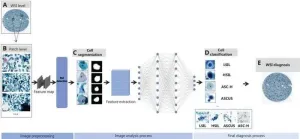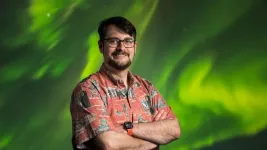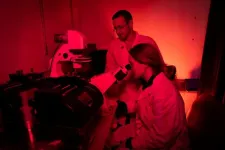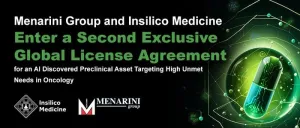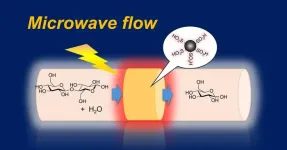(Press-News.org) Consumers of content about serial killers watch and read it to experience intense emotions that are often lacking in everyday life and to understand the reasons that drive people to commit crimes. However, such content does not contribute to increased aggression. These conclusions were drawn by sociologists from HSE University. The results of their study have been published in Crime, Media, Culture: An International Journal.
Research on the modern media market shows that content about serial killers is popular worldwide, spanning films, true crime series, short videos, and written materials detailing crimes, investigations, and the biographies of those involved.
English sociologist Abby Bentham and Canadian sociologist Kevin Haggerty note that people perceive stories about serial killers as a form of entertainment that allows them to experience intense emotions. Canadian sociologist and philosopher Ryan Broll suggests that this is also a way for individuals to escape their own real-life problems.
However, some have expressed concerns that an obsession with stories about serial killers could lead to increased violence. To explore this question, researchers from HSE—Oksana Mikhailova, Darya Osokina, Lev Lyubich, and Ekaterina Gulina—conducted a series of in-depth interviews to study the motives driving Russian youth to consume crime content. A total of 26 young men and women aged 18 to 36 from 14 Russian cities were interviewed.
The main questions revolved around what type of media content about serial killers they liked, how they discovered it, and what they considered when choosing a film, video, or podcast. The respondents included fans of fictional TV shows, series, documentaries, true crime podcasts, books, popular science articles, videos, and social media posts.
The researchers focused specifically on the motives for consuming media content rather than its impact on the audience. The responses indicate that interest in violent content is not driven by a desire to witness violence itself and does not provoke a desire to commit violence in real life.
The study identified two types of motives driving the consumption of content about serial killers: cognitive and emotional. Cognitive motives involve a desire to understand the motives of criminals, linking their actions to childhood trauma, psychological problems, and other factors. This helps viewers better understand the causes of human behaviour. On the other hand, content about serial killers provides a way to experience intense emotions, often compensating for a lack of excitement in everyday life.
Oxana Mikhaylova
‘Interest in stories about serial killers, whether in the form of series or podcasts, is not a sublimation of cruelty. The respondents did not justify the actions of serial killers. On the contrary, they stated that such crimes should be prevented,’ notes Oksana Mikhailova, Research Fellow at the Centre for Modern Childhood Research at HSE’s Institute of Education.
The researchers emphasise that interest in such narratives is usually driven by curiosity and a search for new experiences. These findings could help psychologists develop support programmes for young people experiencing emotional hunger or stress.
END
Tickling the nerves: Why crime content is popular
2025-01-10
ELSE PRESS RELEASES FROM THIS DATE:
Intelligent fight: AI enhances cervical cancer detection
2025-01-10
A cutting-edge article is paving the way for a transformation in cervical cancer screening, leveraging artificial intelligence (AI) to enhance detection accuracy and efficiency. This pioneering research explores the application of AI in medical image interpretation, marking a significant leap in cervical cancer management and prevention. With the aid of deep learning algorithms, the study seeks to address the critical need for more effective screening tests, especially in low- and middle-income countries where traditional methods often fall short. This innovative approach promises to alleviate the global burden of cervical cancer by improving ...
Breakthrough study reveals the secrets behind cordierite’s anomalous thermal expansion
2025-01-10
Cordierite, a remarkable mineral familiar to many as the material behind heat-resistant pizza stones, exhibits an unusual ability to resist changes in size despite significant temperature fluctuations. While widely used in diverse applications from automotive catalytic converters to high-temperature industrial processes, the fundamental reasons behind this anomalous thermal behaviour have remained largely unexplained. A new study, led by researchers at Queen Mary University of London and published in Matter, now provides the first comprehensive explanation, with profound implications for the design and development of advanced materials.
"Modern society demands materials that ...
Patient-reported influence of sociopolitical issues on post-Dobbs vasectomy decisions
2025-01-10
About The Study: Nearly one-third of survey participants indicated sociopolitical issues influenced their vasectomy decision, despite the fact these policies have targeted female reproductive policy. These patient-reported motivations are consistent with recent research using administrative data that found a rise in vasectomy procedure volume after the Dobbs decision.
Corresponding Author: To contact the corresponding author, Kathleen Hwang, MD, email kathleen.hwang@pennmedicine.upenn.edu.
To access the embargoed study: Visit our For The Media website at this link https://media.jamanetwork.com/
(doi:10.1001/jamanetworkopen.2024.54430)
Editor’s ...
Radon exposure and gestational diabetes
2025-01-10
About The Study: This cohort study suggests that higher radon exposure is associated with greater odds of gestational diabetes in nulliparous pregnant individuals. Further studies are needed to confirm the results and elucidate the underlying mechanisms, especially with individual-level residential radon exposure assessment.
Corresponding Author: To contact the corresponding author, Ka Kahe, MD, ScD, email kk3399@columbia.edu.
To access the embargoed study: Visit our For The Media website ...
EMBARGOED UNTIL 1600 GMT, FRIDAY 10 JANUARY 2025: Northumbria space physicist honoured by Royal Astronomical Society
2025-01-10
Dr John Coxon, esteemed member of Northumbria University’s world-leading Solar and Space Physics research group, has been recognised by the Royal Astronomical Society for his work.
Dr Coxon is a Science and Technology Facilities Council (STFC) Ernest Rutherford Fellow at Northumbria University who has garnered international recognition for his research into understanding the Sun's influence on Earth's space environment.
It has today been announced that he has been awarded the with the prestigious ...
Medicare rules may reduce prescription steering
2025-01-10
Weill Cornell Medicine researchers have found that pharmacy benefit managers (PBMs)—organizations that negotiate access to medicines for most patients in the United States—steer patients to use their own pharmacies. However, these pharmacies appear less used in Medicare than in other market segments. These PBMs are part of integrated health care conglomerates that own insurance companies and pharmacies, which may create conflicts of interest.
The study, published Jan. 10 in JAMA Health Forum, found that in 2021 a third of all Medicare Part D pharmacy spending and almost 40% of specialty drug spending within Medicare Part D was through pharmacies owned by the four largest PBMs: ...
Red light linked to lowered risk of blood clots
2025-01-10
Humans and mice exposed to long-wavelength red light had lower rates of blood clots that can cause heart attacks, lung damage and strokes, according to research led by University of Pittsburgh School of Medicine and UPMC surgeon-scientists and published today in the Journal of Thrombosis and Haemostasis.
The findings, which need to be verified through clinical trials, have the potential to reduce blood clots in veins and arteries, which are leading causes of preventable death worldwide.
“The light we’re exposed to can change our biological processes and change ...
Menarini Group and Insilico Medicine enter a second exclusive global license agreement for an AI discovered preclinical asset targeting high unmet needs in oncology
2025-01-10
This is the second asset Menarini Group has inlicensed from Insilico Medicine which was discovered through their generative AI platform, similar to the preclinical stage KAT6 inhibitor (MEN2312) licensed a year ago and which advanced rapidly into the clinical phase.
Under the agreement, Menarini Group will be granted global rights to develop and commercialize the asset. The deal includes a $20m upfront payment, and the combined value, including all development, regulatory, and commercial milestones, is over $550 million, followed by tiered royalties.
FLORENCE, Italy and CAMBRIDGE, Mass., January 10, 2025 : The Menarini Group ("Menarini"), ...
Climate fee on food could effectively cut greenhouse gas emissions in agriculture while ensuring a social balance
2025-01-10
Agriculture accounts for 8 percent of all greenhouse gas (GHG) emissions in Germany. “However, emissions within this sector, could be reduced by 22.5 percent or over 15 million tonnes of GHG annually, if the social cost of carbon were reflected in food prices,” says Julian Schaper, guest scientist at PIK and lead author of the study published in the journal Food Policy. In the Federal Climate Change Act passed in 2019, the government set itself the goal of reducing annual emissions from the current 62 million tonnes to 56 Mt GHG by 2030.
The social cost of carbon is an estimate of the economic damages that would result from emitting one additional tonne of carbon into the ...
Harnessing microwave flow reaction to convert biomass into useful sugars
2025-01-10
Fukuoka, Japan—Researchers at Kyushu University have developed a device that combines a catalyst and microwave flow reaction to efficiently convert complex polysaccharides into simple monosaccharides. The device utilizes a continuous-flow hydrolysis process, where cellobiose—a disaccharide made from two glucose molecules—is passed through a sulfonated carbon catalyst that is heated using microwaves. The subsequent chemical reaction breaks down cellobiose into glucose. Their results were published in the journal ACS Sustainable Chemistry & Engineering.
Converting biomass into ...
